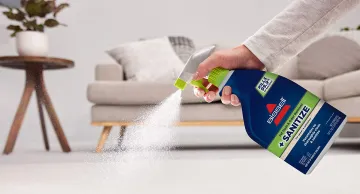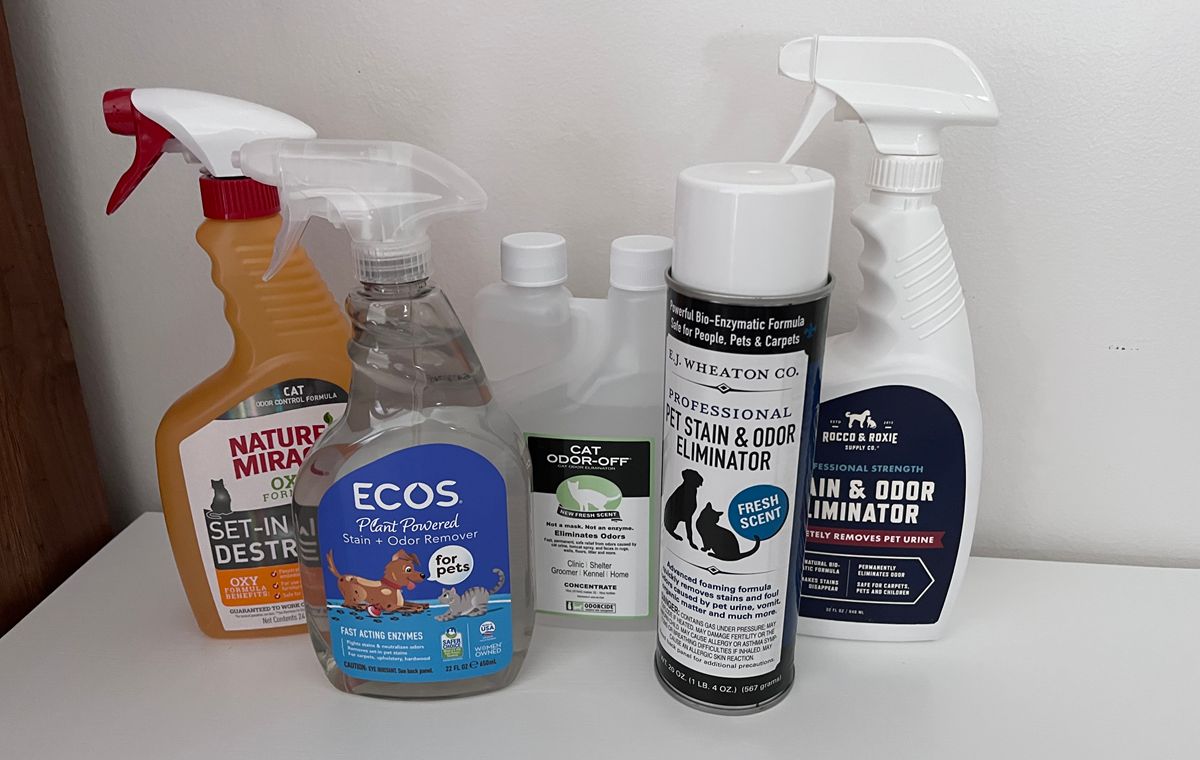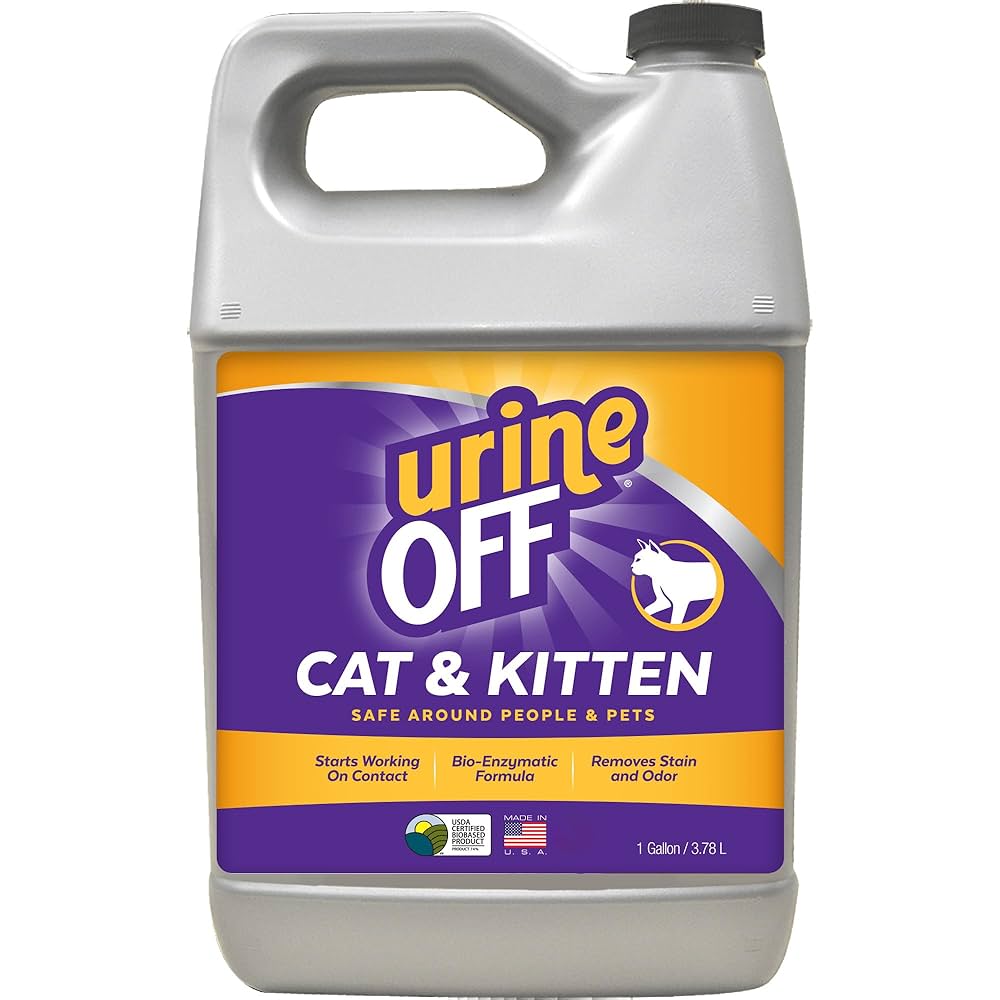Dealing with the lingering odor of cat urine on your furniture can feel like an uphill battle. You love your feline friend, but the smell?
Not so much. It’s frustrating when you’ve tried everything you can think of, yet the odor persists, clinging to your favorite chair or couch. But what if you could finally say goodbye to that stubborn smell once and for all?
Imagine walking into your living room and taking a deep breath of fresh, clean air. It’s possible, and we’re here to help you make it happen. This guide will walk you through practical, easy-to-follow steps to banish that unwanted scent and reclaim your home’s comfort. Let’s dive into the secrets of a fresh-smelling home and keep your furniture odor-free, making you and your cat happy once again.

Credit: www.bissell.com
Identify The Source
Getting rid of cat urine smell from your furniture starts with finding exactly where the odor is coming from. You might think you’ve cleaned the spot, but the smell can linger if you miss the real source. Pinpointing the affected areas helps you target your cleaning efforts effectively and prevents your cat from marking the same place again.
Locate Affected Areas
Check your furniture carefully for any visible stains or damp spots. Urine often soaks into cushions, fabric folds, and seams, making it hard to spot at first glance.
- Look for discoloration or wet patches on upholstery and cushions.
- Feel for dampness, especially if the accident happened recently.
- Trust your nose—sometimes the smell is stronger in places you wouldn’t expect.
Using a UV blacklight can help reveal invisible urine stains. Shine it over your furniture in a dark room, and any urine spots will glow, showing you where to clean thoroughly.
Check For Hidden Spots
Sometimes the source isn’t obvious. Urine can seep deep into the furniture frame, under padding, or onto the floor beneath.
- Lift cushions and check underneath for dampness or smell.
- Don’t forget to inspect the back and underside of couches or chairs.
- Look around areas where your cat spends time or seems to prefer.
Have you ever cleaned a spot only to find the smell returns later? That’s often because hidden areas were missed. Take your time and be thorough—your furniture and your nose will thank you.
Immediate Cleanup Steps
Acting fast is key to remove cat urine smell from furniture. The longer the urine stays, the harder it is to clean. Immediate cleanup stops the odor from setting deep into fabric or wood. Use these quick steps to limit damage and freshen your furniture.
Blot The Urine
Grab clean paper towels or a soft cloth. Press firmly on the wet spot to soak up urine. Do not rub. Keep blotting with fresh towels until no more liquid absorbs. This removes most urine and reduces odor.
Avoid Scrubbing
Scrubbing spreads urine deeper into fabric and padding. It also damages delicate fibers. Instead, gently blot or dab the area. Use a cleaning solution after blotting. Let it sit to break down urine without harsh rubbing.
Effective Cleaning Solutions
Removing cat urine smell from furniture requires effective cleaning solutions that reach deep into the fabric. Ordinary cleaners may not fully break down the odor-causing compounds. Using the right products helps eliminate the smell rather than just masking it. Choose solutions that are safe for your furniture material and strong enough to neutralize odors.
Use Enzymatic Cleaners
Enzymatic cleaners contain natural enzymes that break down urine molecules. They target proteins and bacteria that cause the smell. Spray the cleaner generously on the stained area. Let it sit for at least 10 minutes to work effectively. Blot with a clean cloth and allow the furniture to air dry. Repeat if the smell persists. These cleaners are safe for most fabrics and effective on old and new stains.
Diy Vinegar And Baking Soda Mix
Vinegar neutralizes ammonia in cat urine, reducing the smell. Mix equal parts white vinegar and water in a spray bottle. Spray the affected area and let it sit for 5 minutes. Blot excess liquid with a clean cloth. After it dries, sprinkle baking soda over the spot. Let the baking soda sit for several hours to absorb odors. Vacuum the baking soda thoroughly afterward. This natural solution is gentle and easy to make at home.
Hydrogen Peroxide Method
Hydrogen peroxide helps break down urine stains and odors. Mix 1 cup hydrogen peroxide with 3 tablespoons baking soda. Add a few drops of liquid dish soap for extra cleaning power. Apply the mixture to the stained area carefully. Let it sit for 15 minutes but do not soak the furniture. Blot the area with a clean cloth and let it air dry. Test on a hidden spot first to avoid discoloration. This method works well for stubborn odors and stains.
Deep Cleaning Techniques
Getting cat urine smell out of furniture often requires more than just surface cleaning. Deep cleaning techniques reach beyond the obvious stains and odors, targeting the roots of the problem embedded within the fabric or padding. These approaches can make a significant difference in restoring freshness and comfort to your favorite furniture pieces.
Steam Cleaning Furniture
Steam cleaning uses hot water vapor to break down urine molecules trapped deep inside upholstery. The high temperature kills bacteria and neutralizes odors without harsh chemicals. You can rent a steam cleaner or buy a handheld model made for furniture, making this an accessible option.
When steam cleaning, focus on the affected areas and avoid soaking the fabric too much. Too much moisture can damage delicate materials or cause mold growth. After cleaning, allow your furniture to dry completely in a well-ventilated space to prevent any lingering dampness.
Professional Upholstery Cleaning
If you want guaranteed results or your furniture is valuable, professional upholstery cleaning is worth considering. Experts have specialized tools and solutions designed to penetrate padding and fabric without causing damage. Their experience helps identify the best cleaning method for your specific furniture type.
Professional services often include odor neutralizers that target the urine scent at the molecular level. Have you ever wondered why some odors just won’t go away no matter how much you clean? Professionals deal with these stubborn smells regularly and know what works.
Booking a professional might seem like an expense, but it can save you time and protect your furniture investment. Plus, they often offer warranties or guarantees that give you peace of mind.
Preventing Future Smells
Stopping cat urine smells before they start is key to keeping your furniture fresh and your home comfortable. Preventing future odors saves you from constant cleaning and frustration. Here’s how you can take control and create a more pleasant environment for both you and your cat.
Train Your Cat
Teaching your cat where to go is the first step in preventing unwanted smells. Make sure their litter box is clean, accessible, and in a quiet spot. Cats dislike dirty boxes, so scooping daily can reduce accidents significantly.
Try positive reinforcement by rewarding your cat when it uses the litter box correctly. You might also notice patterns—does your cat avoid the box after certain events or changes? Address those issues promptly to keep accidents at bay.
Use Repellents
Repellents can be a powerful tool to keep your cat off furniture. There are safe sprays and mats designed specifically to deter cats without harming them. These products often use scents cats find unpleasant, guiding them away from problem areas.
Remember, repellents work best when combined with training. You don’t want to push your cat into hiding spots where accidents are harder to clean. Place repellents strategically and observe your cat’s reaction to adjust as needed.
Regular Furniture Maintenance
Consistent cleaning helps prevent lingering odors and discourages repeat marking. Vacuum and wipe your furniture regularly to remove hair, dander, and any faint smells your cat might detect. Using enzyme-based cleaners breaks down urine molecules better than standard cleaners.
Consider protective covers on favorite spots to make cleaning easier and reduce damage. How often you clean can make a surprising difference—would you be surprised if a quick wipe after every accident stops the smell from setting in?

Credit: vacuumwars.com
When To Replace Furniture
Deciding to replace furniture due to cat urine smell is tough. Sometimes cleaning is enough. Other times, the smell stays no matter what you try. Knowing when to let go saves time and stress. It also keeps your home fresh and healthy.
Assessing Damage
Check how deep the urine soaked into the furniture. Smell the area to see if odor remains after cleaning. Look for stains or discoloration on fabric or wood. Touch the surface to find sticky or damp spots. Consider how old the furniture is. Older pieces may trap smell more. If damage is strong and smell lasts, replacement might be best.
Safe Disposal Options
Throw away furniture safely to protect the environment. Donate only if the smell is gone and no damage shows. For strong odors, use local waste disposal services. Check if they accept large furniture items. Some places recycle wood and fabric parts. Avoid dumping furniture in public areas or nature. This keeps your neighborhood clean and safe for animals.

Credit: cats.com
Frequently Asked Questions
How Can I Remove Cat Urine Smell From Fabric Furniture?
Use an enzymatic cleaner designed for pet urine. Blot the area, apply the cleaner, and let it sit. Avoid harsh chemicals, as they may set the odor. Repeat if necessary for stubborn smells.
What Household Products Work To Eliminate Cat Urine Odor?
White vinegar and baking soda are effective. Blot urine, spray vinegar, then sprinkle baking soda. Let it dry, then vacuum. These neutralize odors and help break down urine compounds.
Why Does Cat Urine Smell Persist On Furniture?
Cat urine contains ammonia and proteins that penetrate fabric. Without proper cleaning, these compounds linger and cause strong odors. Using enzymatic cleaners breaks down these substances and prevents odor persistence.
Is It Safe To Use Bleach On Cat Urine Stains?
Bleach is not recommended; it can damage furniture fabric. It may also worsen odors or harm your pet. Opt for pet-safe enzymatic cleaners for effective and safe removal.
Conclusion
Removing cat urine smell from furniture takes patience and the right steps. Act quickly to stop stains from setting. Use safe cleaners designed for pet odors. Repeat cleaning if the smell lingers. Keep your furniture dry after cleaning. Fresh air helps to remove odors faster.
Protect your home by training your cat well. A clean space feels fresh and welcoming again. You can enjoy your furniture without any bad smells. Simple care makes a big difference.

